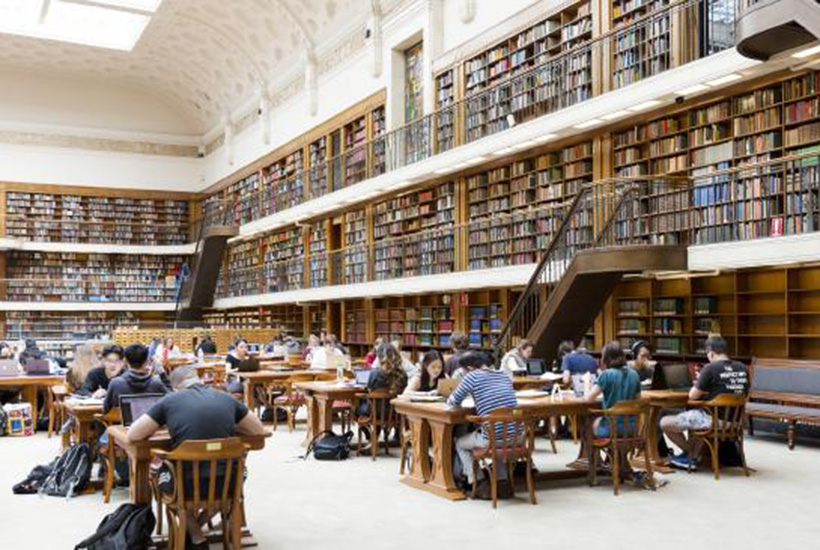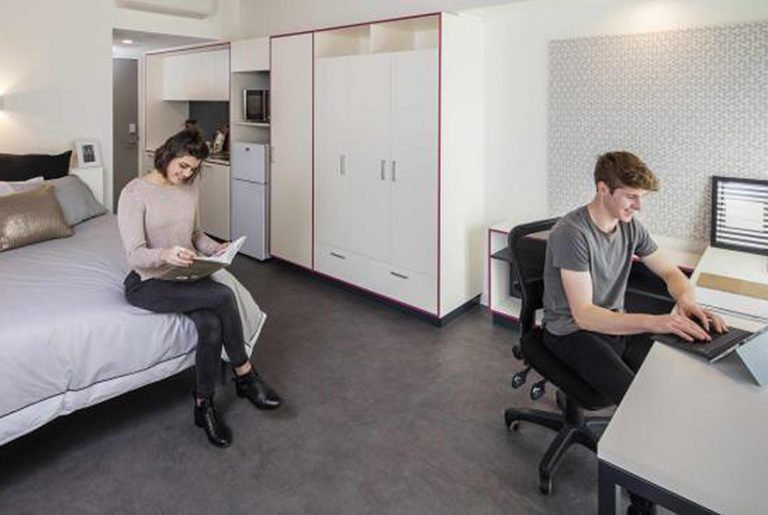Student market now one of Australia’s biggest exports

For 200 years Australia’s prosperity has been largely driven by the regions via the export of wool and wheat and then coal, iron ore and more recently natural gas.
Sure, it was our biggest cities that harnessed the necessary capital and that did the deals to establish these markets, but it was the remote sheep stations, the flat cropping lands and the offshore gas fields that made Australia into a truly prosperous nation.
And yet, oddly enough, none of these export industries have been a particularly significant driver of demand for Australian property.
Commercial Insights: Subscribe to receive the latest news and updates
But then in the 21st century Australia developed a new industry that was mostly city-based and prompted demand for a bespoke new kind of property. Australia’s international student industry was valued at $32 billion in 2018, up from barely $5 billion at the beginning of the century.
The federal department of education says there are 812,000 international students living, working and studying in Australia in the 2019 academic year.
About half (416,000) attend one of the nation’s 42 universities. About a quarter (225,000) do some kind of vocational training via the VET system. The balance is made up of students doing short-term language courses (106,000) and school students (40,000).

The aggregate number of international students in Australia in 2019 is up 9 per cent on the previous year (748,000), and that number was up 10 per cent on the previous year (679,000).
The flat average outlay per student per year on fees and tuition was $42,000 in 2018, to which can be added further spending on things such as private health insurance and living expenses.
In the broadest sense, the parents of Australia’s international students must allocate between say $60,000 and $70,000 per year (in Australian dollars) for no less than two years (for a post-grad degree) to secure an Australian education.
Part of this expenditure is directed to the student accommodation industry that has blossomed in and around the university precincts of our largest cities.
The largest number of students coming to Australia to study in 2019 were from China (229,000), followed by India (122,000), Nepal (60,000), Brazil (32,000) and Vietnam (28,000).
China and India dominate — together they deliver more international students to the Australian market than the next 12 countries combined. While the biggest markets are to some degree spread across all universities, the Chinese clearly prefer NSW while the Indians prefer Victoria. On the other hand students from Brazil prefer Queensland while students from Nepal go for Darwin. Different countries are targeted by different universities.
Surveys show the most popular field of study for international students is management & commerce (accounting, finance, economics) with 35 per cent, followed by society & culture (politics, globalisation, gender studies) at 22%. Fields of study such as education and agriculture account for less than 3 per cent of enrolments by overseas students.

I suppose the logic is that if parents are stumping up close to $70,000 per year in overall expenses to fund an Australian degree, then this kind of investment must deliver a return in terms of career advancement and earning potential.
Surveys show that international students also drive tourism by prompting visits from friends and relatives. This ratio seems to be about six visitors for every seven students, with one of these visits solely for the purpose of visiting the student.
The largest concentration of students, according to official sources, is the Sydney CBD with 191,000, followed by the Melbourne CBD with 168,000, the Brisbane CBD with 47,000, Sydney’s eastern suburbs (especially the University of NSW) and Adelaide CBD both with 29,000, Melbourne’s Carlton with 26,000 and Griffith Uni at the Gold Coast with 24,000.
About 50,000 Australians study overseas each year completing either a university degree or participating in exchange programs, internships and volunteering experiences. The most popular destinations for Australian residents studying overseas are the UK, the US and China.
There are several points to be made about the international student market that is directly relevant to the property industry.
Here is a market of close to a million international students, growing at a rate of close to 10 per cent per year, requiring accommodation in large cities and often near the CBD. This drives demand for rental accommodation. Some parents may even buy an apartment for their kids. Interestingly, census figures show an increase in siblings living together in CBD accommodation.
International students help drive demand for hotel accommodation for visiting parents and relatives. This flow also drives demand for new and more frequent direct flights between Sydney and Melbourne and, say, second-tier cities in China.
Sydney airport offers direct connections into 15 cities in China. Melbourne’s connectivity isn’t far behind. Part of this market is driven by the aspiration and the prestige of international travel by the middle class. But part would be due to the scope to also visit kids at an Australian university.
There is an opportunity, I think, to spread the impact and the economic benefit of direct flights into Sydney and Melbourne by promoting a hop-hop-home strategy. Fly into Australia’s biggest southern cities. Visit your kids. Go to their graduation. Then hop to South East Queensland for an Aussie beach holiday. Then hop to Far North Queensland for a reef experience. Then hop home. This strategy requires direct flights between Cairns-Shanghai and others. Or the hop-home leg could be put into effect from Coolangatta or from Maroochydore, depending upon which airport is able to secure the best direct routes into China.
In time it is possible the flow of international students will subside as the university sector in China, India and elsewhere develops. And there is also the consideration that this flow is dependent upon geopolitical stability.
On the other hand, an Australian education promises greater proficiency in English, the delivery of technical skills recognised in other English-speaking jurisdictions (with modifications), and the possibility of local residency should work be secured upon completion of a degree.
And given the Australian requirement for skilled workers in the 2020s, this overall package is clearly quite enticing as evidenced by the growth in numbers.
Plus, Australia offers a generally safe and friendly environment in which to study, is more or less the same time zone as much of Asia and is an overnight flight away from parents. Put all of this together and it isn’t surprising that Australia’s international student market is now our fourth-largest export industry, and with further to grow in the 2020s.
Bernard Salt is managing director of The Demographics Group
This article originally appeared on www.theaustralian.com.au/property.







